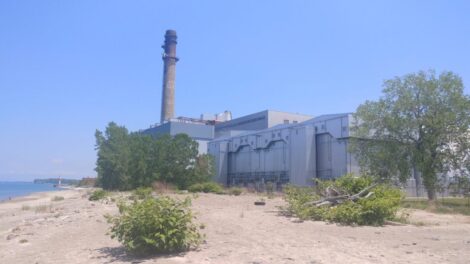Job expectations vary in Ripley site
As Chautauqua County continues to develop a large shovel-ready site in Ripley for future businesses, the prediction of the number of jobs varies widely.
During the legislature’s Economic Development Committee meeting, Mark Geise, deputy county executive for economic development and director of the county Industrial Development Agency, discussed the multi-million project to be placed near Shortman Road near I-90.
In total, there’s 147 acres of land. For Phase I the project would involve about 3,000 feet of new roadway. Water and sewer lines would be installed, as well as gas and electric. “We really feel because of its size, location, etc., that it will fulfill a critical need for warehousing and distribution site inventory,” Geise said.
The county has 65 acres for Phase I, 56 acres of which are developable. They also have the options to buy the land necessary for Phase II, which would be for 85 acres.
A generic environmental impact study has been completed, which examined things like wetlands, archaeological resources, threatened endangered species, and more. Officials said the studies were needed so the county could apply for grants.
The entire project is expected to cost around $16 million. The county is still seeking grant funds. So far they’ve received state and federal grants, money from the county, money from the county’s American Rescue Plan Act, and the IDA. “Right now, we have a gap of about $3.3 million. … If we could score on even half of the grants we’re chasing after, we’ll be ok,” Geise said.
In the worst case scenario, Geise said they can scale back on some of the plans, so the project will still happen, no matter what.
For zoning, permitted uses include warehouse, electronics and small parts manufacturers, commercial lab and research, and other business or industrial parks.
For potential job creation, Geise noted there’s a lot of variables. For Phase I, he said they could envision 35% light industrial, 60% warehousing and 5% general office. If that’s the case, the light industrial section could have 120 jobs, the warehouse distribution could have 100 jobs, and the office work could have 100 jobs, with a total of 320 positions.
Phase 2, with the same percentages, could have another 320 jobs.
The total of both phases, according to Geise, could generate anywhere from 640 to 840 positions.
Geise said they would like to start construction on Phase I in 2025 and have it completed so it could be marketed by the summer of 2026.
When the IDA announced it was going to develop 33 acres of land at the Mason Industrial Park in Ellicott, original estimates for jobs were around 50 new positions.
Legislator Fred Larson, D-Jamestown asked how can the 33 acres of land at Mason Industrial park be projected to generate 50 jobs, but 56 acres in Ripley is projected to generate 320 jobs. “That’s a heck of a difference of opinion as to how many jobs are likely to be created,” he said.
Geise said he’s relying on the county’s consultant but admitted the estimates are a “best guess” at the possibilities. “It could be twice that, it could be half that,” he said.
Andrew Kosa, the consultant hired by the county, explained the difference between the job estimates between the Mason site and the Ripley site.
He said at the Mason Industrial site, he originally projected a 150,000 square foot building, but the property, once developed, may be able to house two facilities that size, which would double the job estimates there in Ellicott.
In Ripley, Kosa estimates they could construct 500,000 square feet of warehouse or manufacturing.
“So if you looked at it on a square foot basis (of the buildings) they would match up,” Geise said.
Kosa also said that in today’s industry standards, sometimes the number of jobs for a warehouse building and the number of jobs for light manufacturing buildings can be the same. “It depends on the ultimate use of the building,” he said.
Larson thanked them for addressing his questions.
“I know there’s a feeling in different places that I’m a pain in the neck and other parts of the body … but we’re supposed to give oversight in county government and keep track of what’s happening to our money,” he said.




